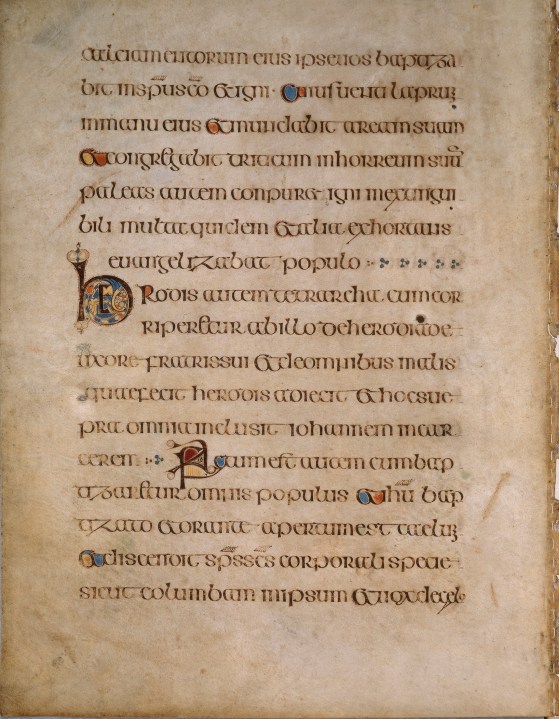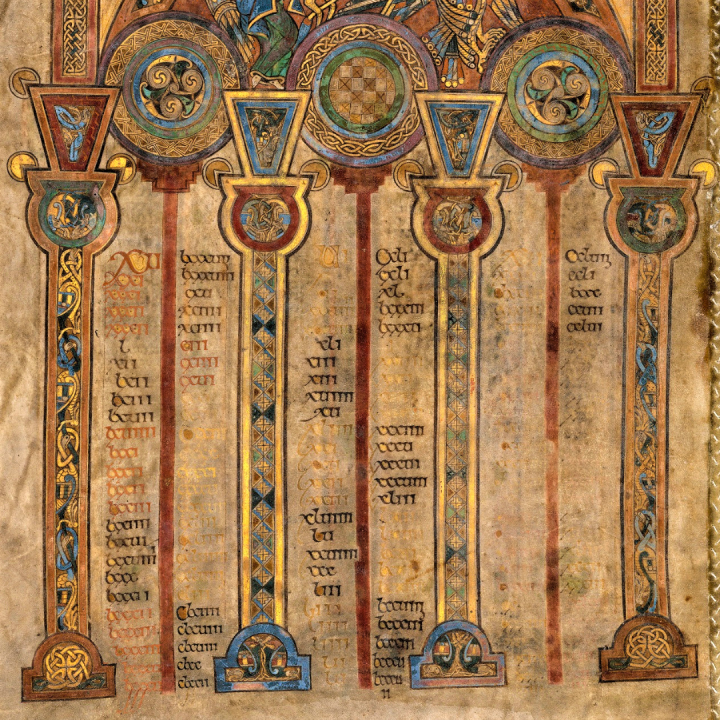


Pages on display
The current opening of the Book of Kells is the Gospel of Luke, folios 199v – 200r.
The current opening of the Book of Kells is the Gospel of Luke, folios 199v – 200r.

Gospel of Luke folio 199v
This opening displays a list of Christ’s ancestors as recited in his genealogy in the Gospel of Luke and is accorded lavish decorative treatment.
Folio 199v concludes the ministry of John the Baptist and recounts the baptism of Jesus. On line 2 the words ‘Spirito Santo’ ‘Holy Ghost’ are contracted or shortened, indicated by a flourish above the words which lets the reader know to fill in the missing letters from the middle of the word. On line 8 of folio 199v, emphasis is placed on the large H for Herod, ‘Herod autem tetrarcha’ ‘Herod the tetrarch’. The H has a thick, black outline with the E placed inside the H, drawing attention to the fact that it was Herod who had beheaded John the Baptist and sent Jesus to his trials and eventual crucifixion.

Gospel of Luke folio 200r
On folio 200r each line starts with the words ‘qui fuit’ or ‘who was’ [the son of] followed by a male name. The organisation of the list into three columns of words highlights the importance of the text in using up more space than needed on the expensive vellum page. The gaps between the text are filled with colourful flourishes such as bunches of yellow grapes. Each letter Q is formed from the body of a lion-like beast and a bird. The linking together of the letters Q show genealogical links as a visible chain.
On folio 200r a blond-haired man, presumably Jesus, appears at the top of a frieze of biting beasts and birds bordering the list of his ancestors. A bearded warrior at the lower right corner, holding a spear and shield, has his foot caught in a snare formed by the final letter of maath (‘Mahath’). His genitalia, outlined in red, are in parallel to the spear, referring to Jesus’ creation as well as his death.






